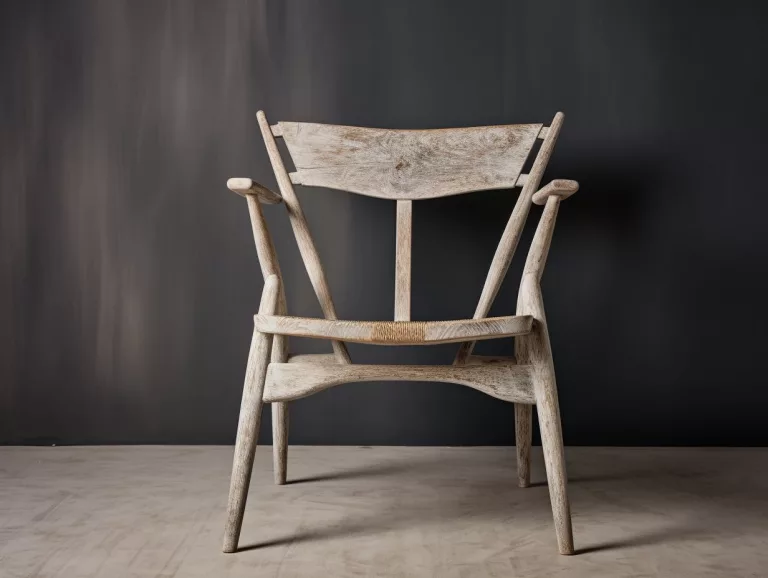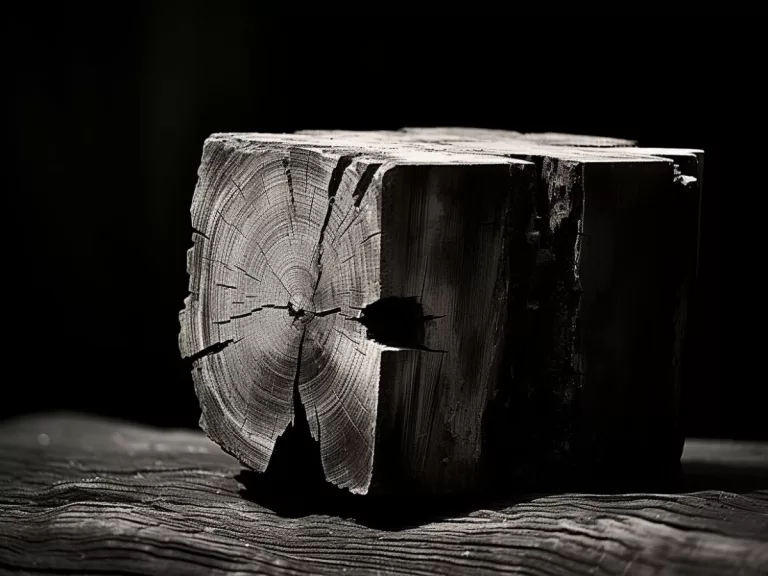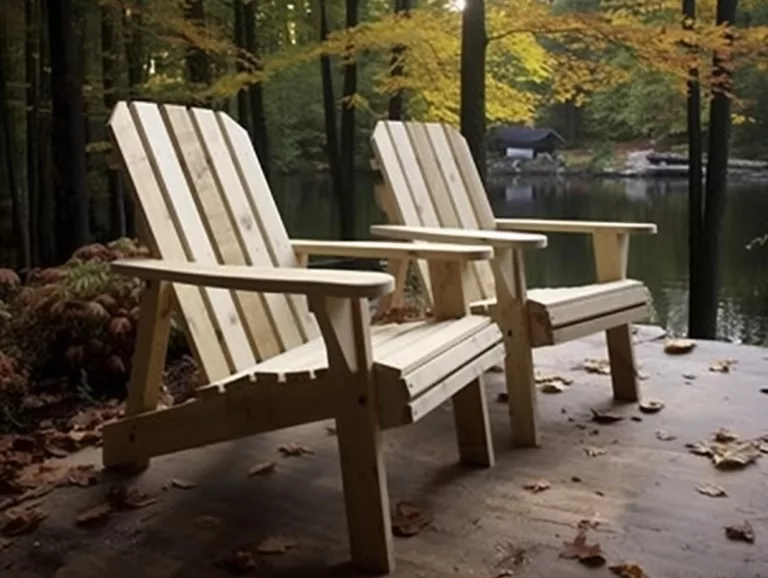How to Get Wood Chips Out of Clothes: A Comprehensive Guide

Key Takeaways
Diverse Cleaning Methods: Outlines various techniques for removing wood chips from clothes, including shaking, vacuuming, adhesive use, and careful washing.
Use of Tools and DIY Tips: Highlights the effectiveness of specialized tools and creative DIY methods for stubborn chips.
Care and Prevention Strategies: Emphasizes post-cleaning fabric care and preventive measures for future encounters with wood chips.
Expert Advice and Caution: Offers professional insights and cautions against common cleaning mistakes to ensure fabric safety.
Welcome to your go-to guide on tackling one of the more frustrating challenges for outdoor lovers: removing those pesky wood chips from your clothes. Whether you’re a dedicated gardener, a parent of active kids, or someone who just loves the great outdoors, you’ve likely faced the annoyance of finding wood chips clinging to your clothing. But don’t worry, we’re here to help your queries on How to Get Wood Chips Out of Clothes.
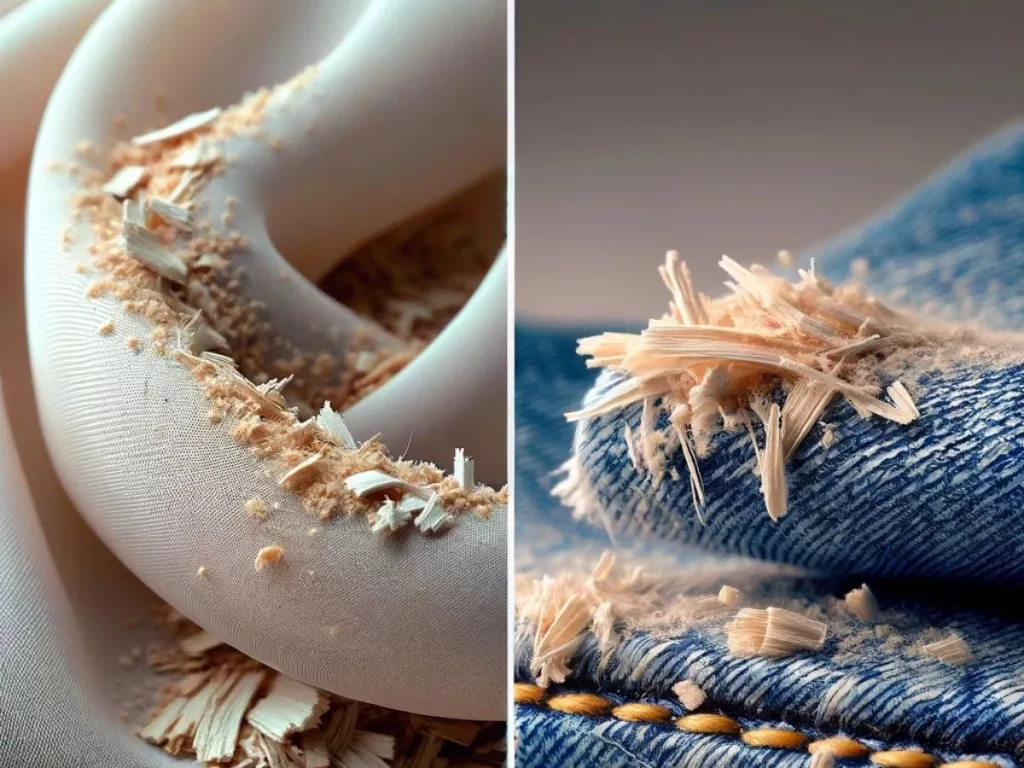
Understanding the Challenge
Why Wood Chips Stick to Clothes
Ever wondered why wood chips seem to have a knack for sticking to your clothes? It’s all about the fabric. Materials like fleece and wool are particularly prone to catching these little bits of nature due to their textured surfaces and loose fibers. But it’s not just the fluffy fabrics; smoother materials can also trap wood chips, especially during active movement in wooded areas.

The Risks of Not Properly Removing Wood Chips
Ignoring wood chips in your clothing isn’t just a matter of discomfort (no one likes the scratchy feeling), but it can also lead to damage to your favorite garments. Wood chips can cause pilling, snagging, and even holes if they’re not removed correctly. Plus, they can leave a trail of debris on your furniture and car seats, which is never pleasant.
Pre-Treatment Steps
Shake It Off: Initial Removal Techniques
The first step in how to get wood chips out of clothes is simple yet effective: give your garments a good shake. Step outside to avoid indoor messes and shake each piece of clothing vigorously. This action helps to dislodge the larger wood chips and makes the subsequent cleaning steps much more manageable.
Spot Cleaning: Addressing the Stubborn Bits
For those stubborn wood chips that resist the shake-off, spot cleaning is your next line of defense. Grab a soft-bristled brush – a toothbrush is perfect for this – and gently target the areas with wood chips. This method is a bit time-consuming and requires patience, but it’s highly effective for removing those persistent pieces without harming your clothes.
Comprehensive Removal Methods
Tackling wood chips in your clothes can be a bit of a puzzle, but with the right techniques, it’s a puzzle you can definitely solve. Let’s dive into some effective methods that will help you get your clothes wood-chip-free in no time!
The Vacuum Approach
Using a vacuum might sound a bit unconventional, but it’s a game-changer. Here’s how to do it:
- Choose the Right Attachment: A narrow nozzle or upholstery brush works best.
- Gentle Vacuuming: Gently run the vacuum over the affected areas. The suction pulls out the wood chips without harming the fabric.
- Repeat if Necessary: Sometimes, a second pass can pick up any stubborn chips left behind.
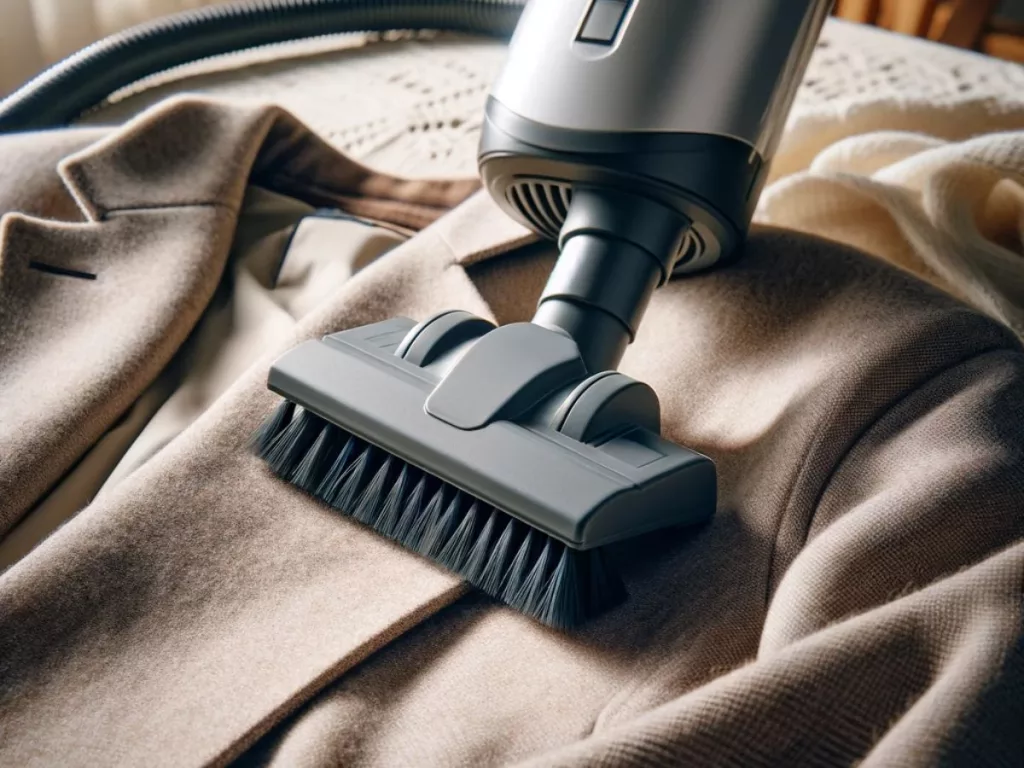
Adhesive Solutions: Duct Tape and Lint Rollers
Adhesives can be your secret weapon. Here’s how to use them effectively:
- Duct Tape Method: Cut a strip of duct tape, press it onto the area with wood chips, and then peel it away. The chips stick to the tape and come right off.
- Lint Roller Magic: Roll a lint roller over the fabric. It’s less aggressive than duct tape but works wonders for lighter fabrics and smaller chips.

Washing Machine Tactics
Washing machines can be helpful, but there’s a trick to it:
- Pre-Shake: Give your clothes a good shake before tossing them in the washer.
- Cold Water Wash: Use a gentle cycle with cold water to avoid setting the chips further into the fabric.
- Check Post-Wash: After washing, check for any remaining chips and repeat if necessary.
Hand Washing Techniques
For delicate fabrics, hand washing is the way to go:
- Soak and Swirl: Soak the garment in cold water and gently swirl it around. This can loosen and remove the chips.
- Spot Clean: Gently rub the affected areas with your fingers or a soft brush.
- Rinse Thoroughly: Make sure all the wood chips are out before drying the garment.
Advanced Techniques
Sometimes, you need to bring out the big guns to deal with those pesky wood chips. Here are some advanced techniques that can make a huge difference.
Using Specialized Tools
Specialized tools can offer a more targeted approach:
- Fabric Shavers: These can gently shave off the wood chips without damaging the fabric.
- Deshedding Brushes: Originally for pets, these brushes can gently pull out wood chips from deeper fabrics.
Using fabric shavers is also a very good option

DIY Solutions and Home Remedies
Don’t overlook the power of DIY solutions:
- Homemade Tape Gloves: Wrap some tape around your hand (sticky side out) and pat down the affected areas.
- DIY Fabric Softener Soak: Mix a DIY fabric softener solution and soak the garment to loosen the wood chips.
Following video shows how to remove things from Sherpa and Fleece fabrics.
You can watch this video on removing lint from clothes.
Post-Cleaning Care
After you’ve successfully tackled the wood chips, it’s crucial to give your clothes the right post-cleaning care. This ensures they stay in great shape for your next outdoor adventure.
Drying and Final Inspection
Before you toss your clothes in the dryer or hang them up, do a final inspection:
- Check Thoroughly: Look over each garment to ensure all wood chips are gone.
- Air-Dry When Possible: Air-drying is gentler on fabrics, especially if they’ve been through rigorous cleaning.
- Use Low Heat for Dryer: If you must use a dryer, opt for a low heat setting to prevent any damage.
Fabric Care Tips
Maintaining the quality of your clothes post-cleaning is just as important as the cleaning itself:
- Follow Fabric Care Labels: Always check the care labels for specific instructions.
- Gentle Detergents: Use mild detergents to preserve fabric integrity.
- Regular Maintenance: Regularly check for any loose threads or damage to prevent further issues.
Prevention Strategies
The best way to deal with wood chips is to prevent them from sticking to your clothes in the first place. Here’s how:
Choosing the Right Clothing for Outdoor Activities
Selecting the right fabric can make a huge difference:
- Tight Weaves: Choose tightly woven fabrics as they’re less likely to trap wood chips.
- Synthetic Fibers: Materials like nylon and polyester are more resistant to debris.
- Wood Chip-Resistant Clothing: Some outdoor clothing is specifically designed to resist debris.
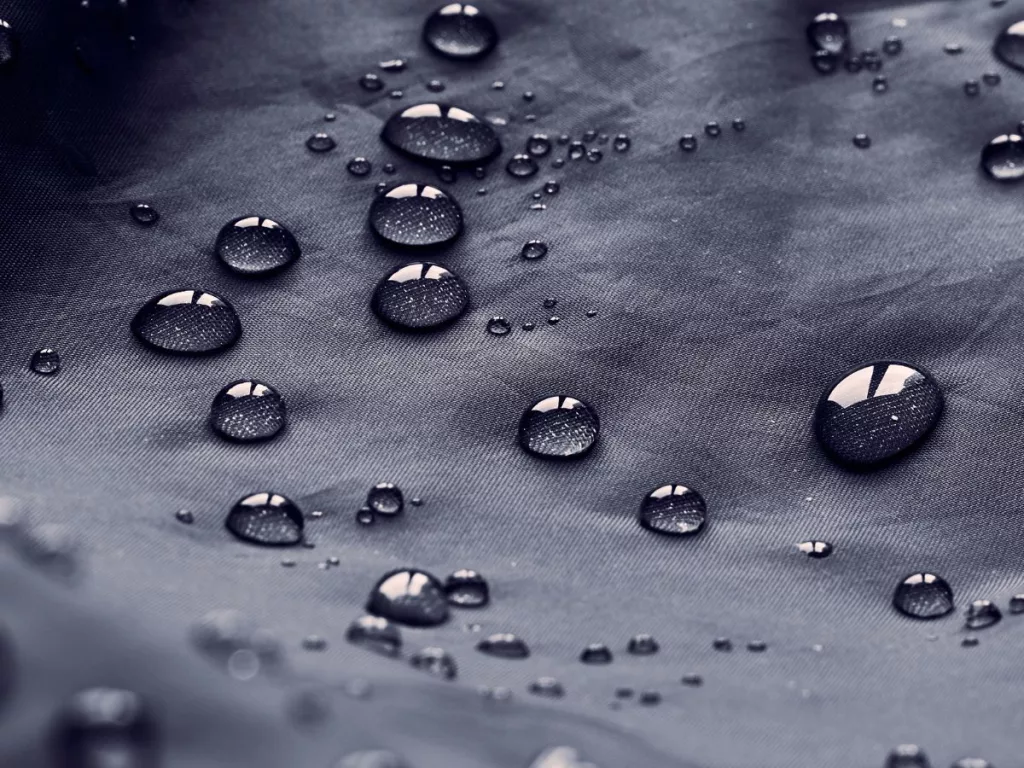
Protective Measures
Sometimes, an extra layer of protection is all you need:
- Aprons and Coveralls: Wear these over your clothes when working in wood-rich environments.
- Cuffs and Collars: Ensure they’re closed or tight to prevent chips from getting inside.
Expert Advice and Insights
Gleaning insights from those who deal with fabrics and wood chips regularly can provide invaluable tips.
Insights from Laundry Experts and Arborists
Professionals in laundry and tree care have some tricks up their sleeves:
Laundry Expert Tips
- Pre-Treat with Stain Removers: Apply directly on wood chip areas before washing.
- Use Gentle Cycle and Cold Water: Prevents fabric damage and helps remove chips.
- Extra Rinse Option: Ensures all wood chips are washed out.
Arborist Advice
- Wear Protective Clothing: Choose tightly woven fabrics or special outdoor gear.
- Immediate Removal: Shake off wood chips right after exposure.
- Regular Gear Cleaning: Keep work clothes free from accumulated wood chips.
Common Mistakes to Avoid
Learning what not to do is just as important:
- Avoid Aggressive Scrubbing: This can damage the fabric.
- Don’t Ignore Fabric Type: Each material requires a different approach.
- Don’t Rush the Process: Hasty cleaning can lead to missed chips and further damage.
Conclusion
Well, there you have it – your comprehensive guide to banishing those pesky wood chips from your clothes! We’ve covered everything from the initial shake-off to advanced cleaning techniques, ensuring you have all the tools you need for effective cleaning. Remember, the key is patience and choosing the right method for your fabric type. With these tips and tricks, you’ll turn a frustrating chore into a quick, satisfying task.
I’d love to hear how these methods worked for you. Got any personal tricks up your sleeve? Share your experiences and tips in the comments below – let’s help each other keep our outdoor gear in top shape!
FAQs
How can I get tree sap out of clothes?
To get tree sap out of clothes, apply rubbing alcohol or hand sanitizer to the sap-stained area. Let it sit for a few minutes to break down the sap. Then, gently scrub with a soft brush or cloth. Wash the garment in warm water with detergent, and check the stain before drying. If the stain persists, repeat the process before drying.
How to get wood chips out of wool?
To remove wood chips from wool, gently shake the garment, then use a soft brush to brush out the chips. For stubborn pieces, lightly dab with a lint roller or duct tape. Hand wash gently in lukewarm water with mild detergent and lay flat to dry. Avoid rough handling to prevent damage to the wool.
How to get mulch stains out of clothes?
To remove mulch stains from clothes, pre-treat the stain with a stain remover or liquid laundry detergent. Let it sit for 10-15 minutes, then wash the garment in the warmest water safe for the fabric. Check the stain before drying; if it remains, repeat the treatment.
How can I prevent wood chips from sticking to my clothes in the future?
Opt for tightly woven or synthetic fabrics when you’re in wood-rich environments. Protective wear like aprons and coveralls can also be a big help.
How to get wood chips out of socks?
To get wood chips out of socks, shake them out vigorously, then gently brush the inside and outside with a soft brush. Wash in a gentle cycle with cold water.
